JAMESTOWN VS. PLYMOUTH
Unit Overview
In this unit, you are going to learn the similarities and differences between two of the first settlements, Jamestown, Virginia and Plymouth, Massachusetts.
Jamestown
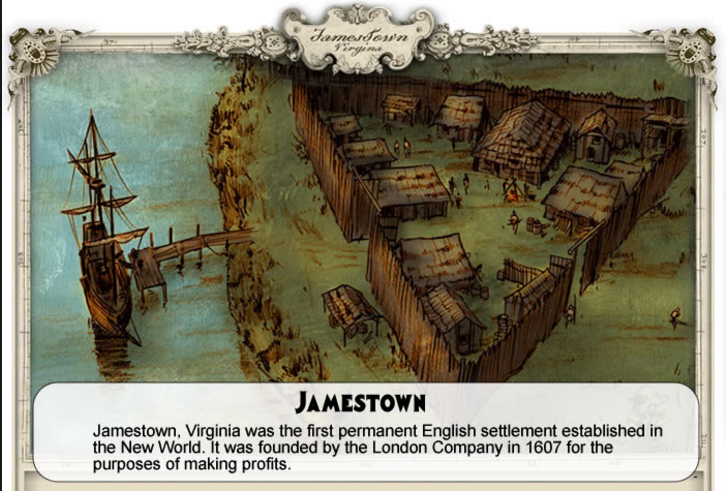
Jamestown was the first permanent English settlement in North America. It was founded in 1607 and served as the capital of the Virginia colony for over 80 years. It remained the capital of the Virginia Colony until 1699 when the capital was moved to Williamsburg.
The Virginia Company was assigned land in the New World by the king of England. They had high hopes of making a lot of money by growing and making things in their colony that they could ship back to England for a profit. To do this, they needed a labor force. The Virginia Company advertised for colonists. Anyone who agreed to make the journey was promised 50 acres of land and a share in the profits. That was quite an offer. About 1,000 people accepted. A ship set sail for the New World. In 1606, King James I of England gave the Virginia Company of London the charter to establish a new colony in North America. They financed an expedition of 144 men (105 settlers and 39 crewmen) to travel to America aboard three ships named the Susan Constant, the Godspeed, and the Discovery. They set sail on December 20, 1606.
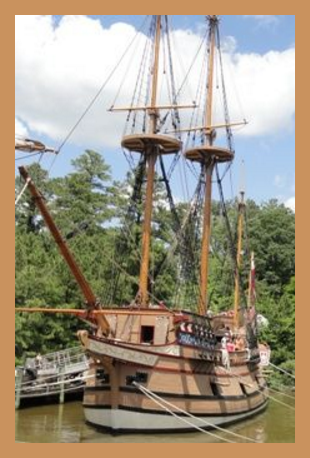
Jamestown was the name of the area selected by the Virginia Company to be the new home of these colonists. It was a swampy area, nearly an island, connected to the mainland by a sandbar. It was selected because the Virginia Company believed it could be defended. The colonists were not worried about the natives. The Indians in the area seemed friendly. They were worried about Spanish invasion.
The choice of location did not work out well. The colonists soon ran out of game on the "island", and fresh water was in short supply. They had other problems. The colonists were badly equipped to start a colony. About half of the colonists had been "gentlemen" back in England. They had little or no work experience. They knew nothing about farming or building. They had no intention of doing any of the work. They expected the others to feed and care for them. As you can imagine, this did not go over well with the other colonists.
Even then, the colonists in Jamestown might have survived if they had had time to plant crops and harvest before winter set in. They did plant, but they were not worried about food. They expected ships to arrive from England, but only a few ships arrived. The ships brought some supplies, but the ships had been sent to take goods back to England, goods that had not yet been created by the colonists. They might have survived if they had abandoned their original settlement and moved inland where food, water, and firewood were in ample supply. Of course, they did not know if the natives would remain friendly if they moved inland. And the fort they built on the "island" did offer some protection. So they did not move inland.
The local Native Americans were part of a large confederacy of tribes called the Powhatan. At first the settlers did not get along with the Powhatan. Some settlers were killed or kidnapped by the Powhatan when venturing outside the fort. It was not until Captain John Smith took over the leadership of the colony that the relationship improved. When Smith attempted to visit the Powhatan Chief, he was taken captive. Smith was saved when the chief's daughter, Pocahontas, intervened and saved his life. After this event, the relationship between the two groups improved and the settlers were able to trade with the Powhatan for much needed goods.
It was in the summer of 1608 that Captain John Smith became the president of the colony. Unlike the other leaders, Smith was not a "gentleman" but an experienced seaman and soldier. Smith's leadership gave the colony a chance to survive. A lot of the settlers did not like Smith. He forced everyone to work and made a new rule that said "if you don't work, you don't eat." However, the rule was necessary because too many of the settlers were sitting around expecting others to build houses, grow crops, and hunt for food. Smith also told the Virginia Company to only send skilled laborers such as carpenters, farmers, and blacksmiths to the settlement in the future.
If it had not been for the generosity of the Indians in the area, they all would have died. As it was, with only two doctors, low supplies of food and fresh water, freezing temperatures, and almost no medicine to combat disease, only about 100 of the original colonists survived Jamestown. Jamestown was established around 13 years before the Pilgrims landed at Plymouth, Massachusetts.
The video travels back in time to the founding of Jamestown, Virginia, and demonstrates how difficult it was for the invading English to create a community in a foreign country. It also highlights the key moments and figures of the settling of Jamestown, from the establishment of the Virginia Company to the establishment of a representative assembly.
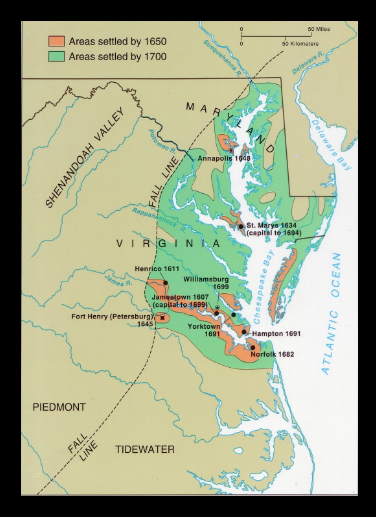
Plymouth
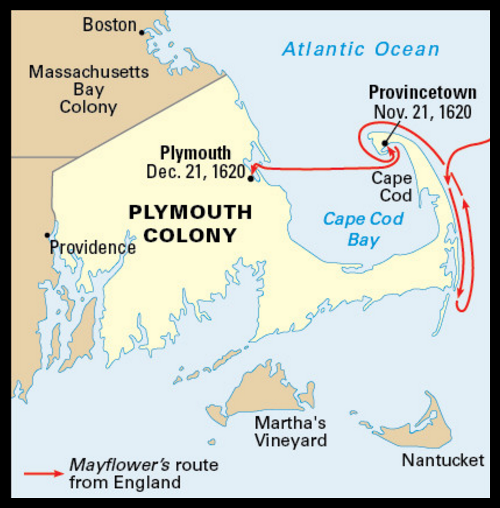
A small group of people, the Pilgrims, arrived in the New World from England on a rented ship named the Mayflower. They landed at Plymouth Rock, Massachusetts, on a cold day in December 1620. Back in England, everyone had to belong to the Church of England. The Pilgrims did not want to belong to the Church of England. They were seeking religious freedom.
When the Pilgrims arrived in New England, they decided they needed to make an agreement on how issues would be settled and the colony would be run. They signed a document that is today called the Mayflower Compact. The compact declared that the colonists were loyal to the King of England, that they were Christians who served God, that they would make fair and just laws, and that they would each work for the good of the colony. The Mayflower Compact was signed by 41 of the Pilgrim men (the women were not allowed to sign). The men also voted John Carver to be the first governor of the colony.
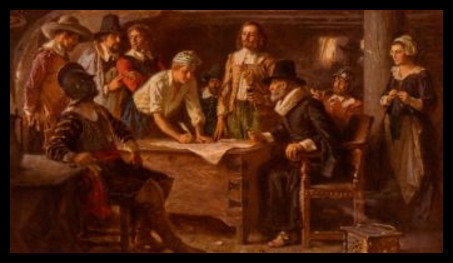
There were only 102 people - men, women, and children - aboard the Mayflower. When they arrived in the New World, there was no one to meet them. What they found was a foot of snow on the ground and a dense forest of trees along the shore. It had taken 8 weeks for the voyage. People were sick. Nearly half of their people died within the first week. While caring for the sick, those who could began to build a long cabin of logs, to act as a community home for themselves and their animals. They moved everything they had brought with them from the ship into this log cabin. The Mayflower had to return to England. It was only rented, with borrowed money at that. But it stayed in harbor long enough for the Pilgrims to unload and to bury those who had died.
After arriving in America, the Pilgrims searched the coast of New England for a good place to build a settlement. They eventually found a location called Plymouth. It had a calm harbor for their ship, a river for fresh water, and flat lands where they could plant crops. It was here that they built their village and established the Plymouth Colony.
Those who survived made wise use of nature about them - the land, the sea, and the forest. They found food. Come spring, they planted corn, which they received from the friendly local Indians. An Indian named Squanto was especially helpful. Squanto showed them how to plant corn, where the best fish could be found, and much more. This small band of people might not have survived without Squanto's help. But nothing would have made them move back to England, even if they could. In England, they had been imprisoned and harassed and suffered much for their religious convictions. They were determinded to make a home for themselves in the New World. With Squanto's help, and other friendly Indians, they did just that.
One day, a new tribe arrived. They handed the Pilgrims a snakeskin bag full of arrows. It was their way of announcing war. The Pilgrims sent back a bagful of bullets. Then, as quickly as possible, the settlers built a huge wall of logs around the village of Plymouth for protection. They locked the gate at night, and left men on guard. They expected trouble, but none arrived. They did not hear from these Indians again.
The first autumn was a cause for rejoicing. The Pilgrims had lived through the harsh winter. They had planted in the spring. They had made friends with the local Indians. And in the autumn, they harvested their crops, canned food, and prepared for the winter ahead. In November, they had a celebration. They ate deer, and wild turkeys, and corn, and bread. They went to church. And then they feasted. They invited their good friends, the Indians, to join them. That was the first Thanksgiving.
Before the end of November, a ship arrived from England, carrying more settlers. These settlers did not have to go through what the first settlers had experienced. These settlers were greeted by the first Pilgrims. The ship carried away a payment for the rent of Mayflower - beaver skins, boards, and codfish.
Over the next seven years, more settlers arrived in Plymouth. They brought cows and hogs and sheep with them. The people of Plymouth worked to gather goods to send back to England, each time a ship arrived, to repay the original debt as well as new ones created by the new settlers. At the end of seven years, although the debt was not yet repaid in full, Governor Bradford, who was in charge of the Plymouth community, went ahead and divided the good farmland beyond the village. He gave every family a plot of land, a farm of their own. That was a day of rejoicing! Each Pilgrim had earned a home in the New World.
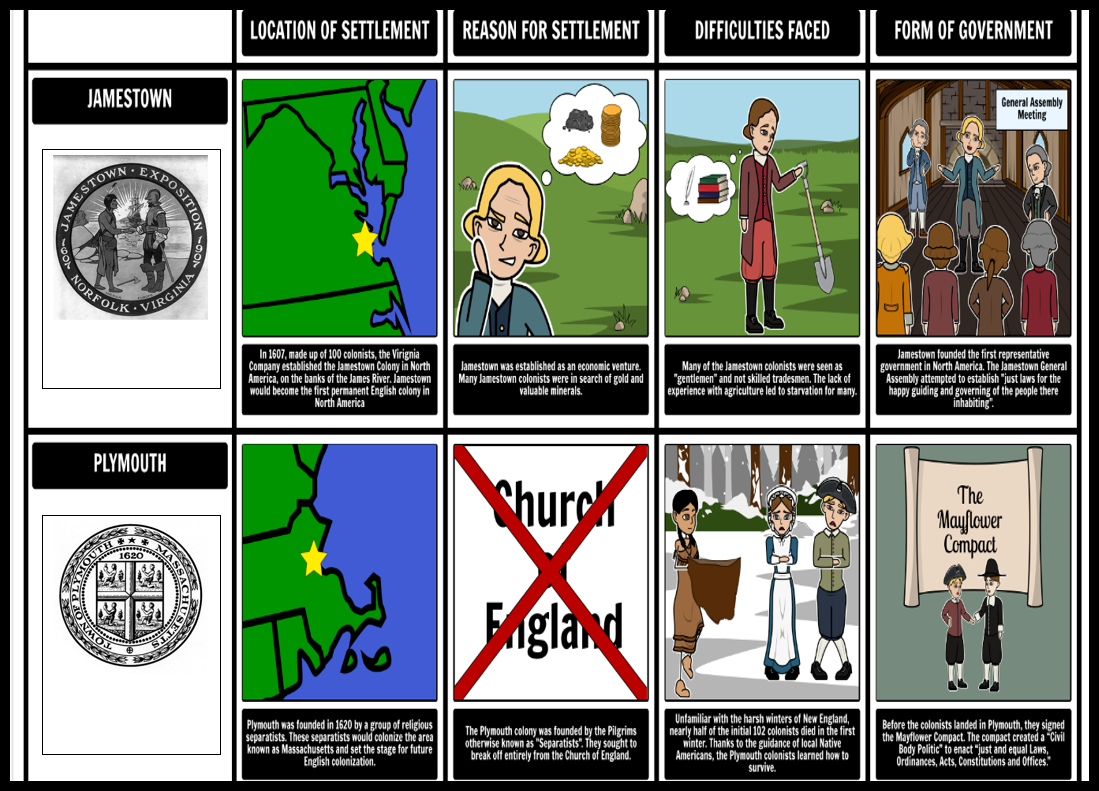
 |
| Unit 15 Pocahontas Activity |
| Unit 15 The New World Article and Quiz |
Now answer the questions!